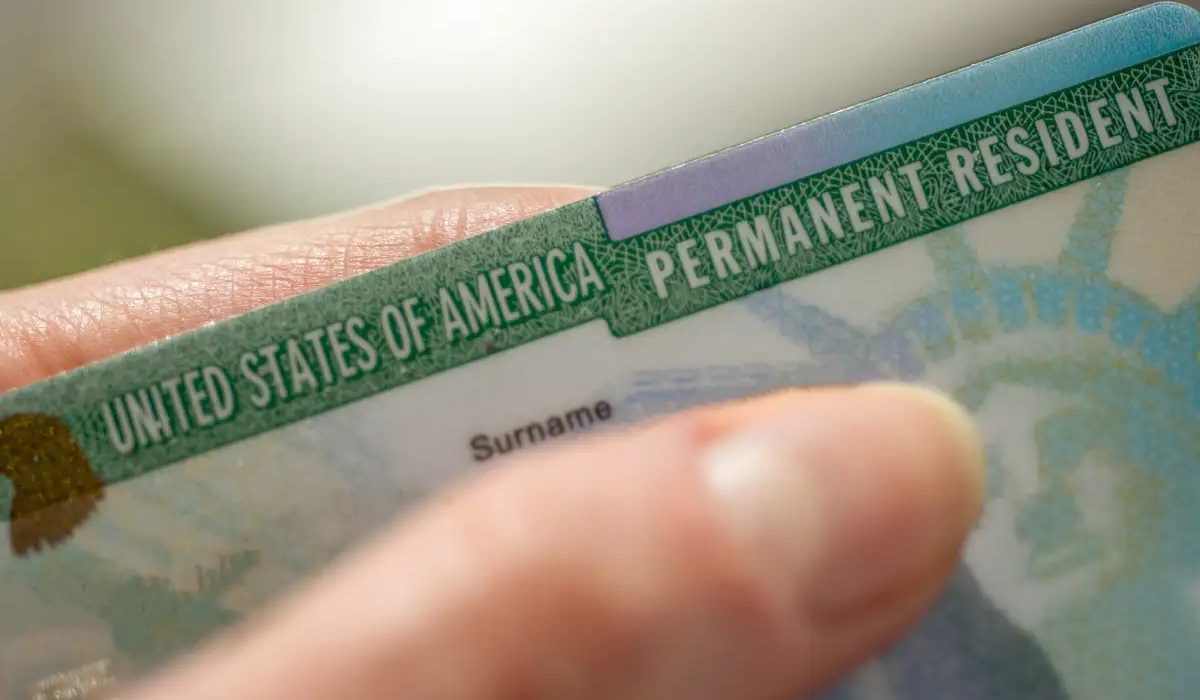The Green Card, officially known as a Permanent Resident Card, allows non-U.S. citizens to live and work permanently in the United States. Each year, thousands of people apply for this status through family sponsorship, employment, refugee or asylum protection, or other categories approved by U.S. immigration law.
Understanding how to apply for a Green Card is essential before beginning the process. This guide provides a clear, educational overview of eligibility, application procedures, and what to expect during each stage — based on publicly available information from the U.S. Citizenship and Immigration Services (USCIS).
What Is a Green Card?
A Green Card grants permanent resident status, which means you can live, study, and work in the U.S. indefinitely, as long as you maintain your lawful status.
Permanent residents receive many of the same rights as citizens — such as employment eligibility and protection under U.S. laws — but they cannot vote in federal elections or hold certain government jobs.
Holding a Green Card is also a major step toward eventual U.S. citizenship through naturalization.
Main Eligibility Categories for Green Card Applicants
The U.S. offers several legal pathways to apply for a Green Card. Each category has specific criteria and documentation requirements.
Family-Based Green Cards
U.S. citizens and lawful permanent residents can sponsor close relatives.
Eligible relationships include:
- Immediate relatives of U.S. citizens (spouses, unmarried children under 21, and parents).
- Family preference categories (siblings, married children, and certain relatives of Green Card holders).
Employment-Based Green Cards
Foreign nationals with job offers or exceptional abilities may qualify.
Common categories:
- Workers with specialized skills or advanced degrees.
- Professionals in high-demand industries (science, medicine, technology).
- Multinational executives or researchers.
Diversity Visa Lottery
Also known as the DV Lottery, this program provides a limited number of Green Cards to applicants from countries with historically low immigration rates to the U.S.
Selection is random, and winners must still meet all eligibility requirements.
Refugee or Asylee Status
Individuals granted asylum or refugee protection can apply for permanent residency after one year of living in the United States.
Special Programs
Some people qualify through humanitarian or special programs, such as:
- Victims of human trafficking (T visa holders).
- Victims of abuse (VAWA self-petitioners).
- Certain Afghan or Iraqi nationals who worked with the U.S. government.
Each category has a separate application process under immigration law.
How to Apply for a Green Card
The process differs slightly depending on whether the applicant is inside or outside the United States.
Below is a general overview for informational purposes:
Step 1: Determine Eligibility
Identify which Green Card category applies to your situation — family, employment, refugee, or other.
The official USCIS website (uscis.gov) provides eligibility details and forms for each type.
Step 2: File an Immigrant Petition
In most cases, someone (a sponsor or employer) must file an immigrant petition for you.
Common petitions include:
- Form I-130: Petition for Alien Relative (family-based).
- Form I-140: Immigrant Petition for Alien Worker (employment-based).
- Form I-360: Petition for Amerasian, Widow(er), or Special Immigrant.
In certain cases, individuals may self-petition (for example, under VAWA or EB-1 categories).
Step 3: Wait for Petition Approval
USCIS reviews petitions to verify eligibility. If approved, your case moves to the National Visa Center (NVC) for processing if you are outside the U.S., or you may proceed with adjustment of status if you are already in the country.
Step 4: Check Visa Availability
Most Green Card categories are subject to annual visa limits. You can check the Visa Bulletin, published monthly by the U.S. Department of State, to determine when your priority date becomes current.
Step 5: File the Green Card Application
When a visa becomes available, you can formally apply for a Green Card.
Applicants inside the U.S. file Form I-485 (Application to Register Permanent Residence or Adjust Status) with USCIS.
Applicants outside the U.S. apply through Consular Processing at a U.S. Embassy or Consulate.
Step 6: Attend Biometrics Appointment
You may be scheduled for a biometrics appointment to provide fingerprints, a photo, and a signature. This helps USCIS verify your identity and conduct background checks.
Step 7: Attend an Interview
Most applicants must attend an in-person interview. During the interview, an immigration officer reviews your application, asks clarifying questions, and confirms eligibility.
Step 8: Receive a Decision
After review, USCIS or the consulate will issue a decision:
- Approved: You will receive your Green Card or immigrant visa.
- Request for Evidence (RFE): Additional documentation may be needed.
- Denied: Applicants may have options to appeal or reapply later, depending on the reason.
Processing times vary by case type and workload.
Required Documents (General Overview)
Typical documents required during the process include:
- Valid passport and birth certificate.
- Immigration forms (I-130, I-485, etc., depending on category).
- Medical examination results (Form I-693).
- Proof of financial support (Form I-864, Affidavit of Support).
- Two passport-style photographs.
- Marriage or divorce certificates, if applicable.
- Police clearance certificates (for consular processing).
Always refer to USCIS or Department of State instructions for the most up-to-date requirements.
Fees and Processing Times
Each Green Card application involves filing fees that vary depending on the category and forms submitted.
- Form I-485: Typically several hundred dollars (exact fee posted on USCIS website).
- Biometrics: Additional small fee.
Processing times can range from a few months to several years, depending on eligibility category, applicant’s country of origin, and agency workload.
Common Reasons for Delays or Denials
Applications may face delays or denials for various reasons, such as:
- Missing or incomplete documentation.
- Ineligibility under the chosen category.
- Failure to respond to USCIS requests.
- Background check issues.
- Inadmissibility under immigration law (e.g., prior visa violations).
Carefully following official instructions and submitting accurate information helps reduce these risks.
Rights and Responsibilities of Green Card Holders
Once approved, Green Card holders have key rights and obligations, including:
- Rights:
- Live and work permanently in the U.S.
- Travel abroad and re-enter the U.S. (under certain limits).
- Apply for Social Security and Medicare (after meeting eligibility).
- Responsibilities:
- Obey all federal and state laws.
- File taxes annually.
- Notify USCIS of address changes.
- Renew the card every 10 years.
- Support democratic values and avoid prolonged absences.
Failure to meet these requirements may affect permanent resident status.
How to Avoid Common Mistakes
To make the process smoother:
- Use official USCIS forms — always free to download at uscis.gov.
- Avoid third-party websites charging unnecessary fees.
- Double-check every form for accuracy.
- Keep copies of all submissions.
- Track your case online through the USCIS Case Status portal.
Being organized and informed helps applicants navigate the process confidently.
Bottom Line
Applying for a Green Card is an important legal process that requires patience, accuracy, and adherence to official U.S. immigration procedures.
Whether applying through family, employment, or special programs, understanding the steps and requirements can help applicants prepare effectively.
While this guide provides a general overview, applicants should always refer to official government sources — such as USCIS.gov or the U.S. Department of State — for the latest instructions and updates.
Permanent residency represents a major milestone, offering the chance to live, work, and build a future in the United States.






